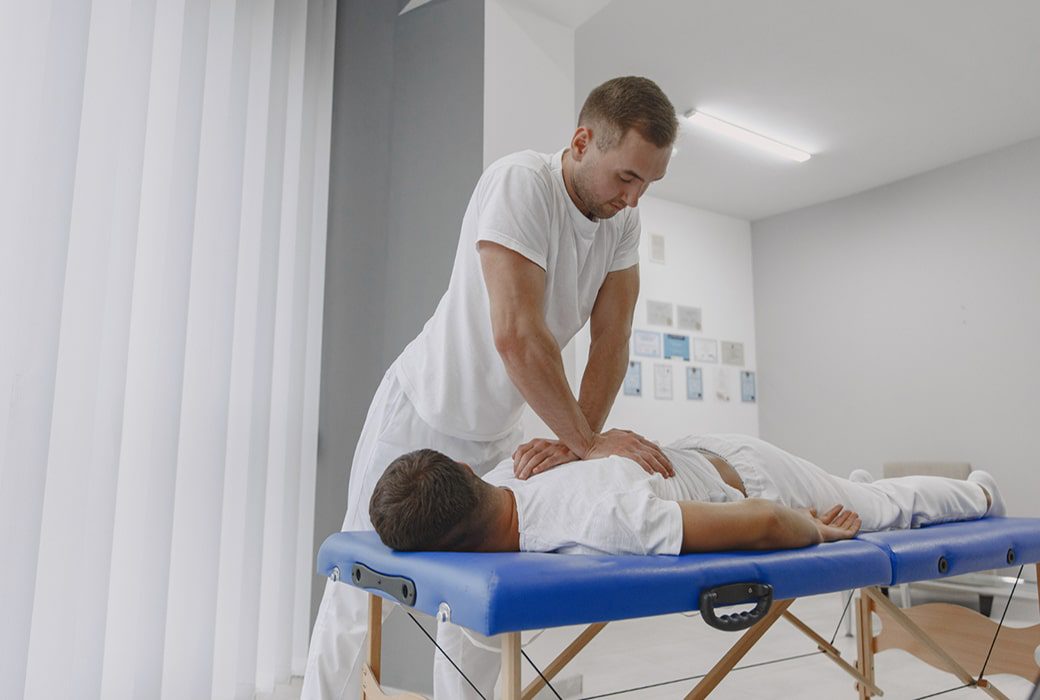For many people, sciatica pain is the worst pain they’ve ever felt. When sciatica is at its worst, relief seems unlikely and nothing seems to help. But relief is closer than you may think.
Determining if sciatica is getting better is pretty straightforward. Unlike other issues, the severity of pain isn’t a good indication of healing. Instead, the location and movement of the pain is the best indication. If the pain is “retreating” up the leg, it’s getting better, even if the back and buttock seem to be getting worse.
The Various Symptoms of Sciatica
Before we dive into how to tell if sciatica is getting better, we need to go over the various symptoms associated with sciatica. When we use the blanket term “pain” in regards to sciatica, we’re also talking about these other symptoms. When the sciatic nerve is irritated by a herniated disc or piriformis syndrome, it can cause a wide range of strange feelings down the leg. The most common are:
- Numbness
- Sharp or dull pain
- Radiating pain
- Tingling
- A feeling like cool water running down the back of the leg
- Changes in sensation in the buttock, back, back of the leg, or foot
Does Sciatica Get Worse Before it Gets Better?
In a sense, sciatica does get worse before it gets better. This is called centralization and it can be very misleading, making you think that the sciatica is actually getting much worse, or that you’ve done something to cause sciatica to flare up, when the opposite is happening.
The furthest location away from your low back in which you’re experiencing pain is the one to watch. For some, this is the foot. For others, it’s the calf. And for other people, it may be the back of the thigh. No matter where it is for you, pay attention to that pain. When you think your sciatica is getting worse, take note of where the pain is. If the pain has “retreated” and you’re no longer experiencing pain in the foot, calf, or leg, your sciatica is getting better.
Unfortunately, this “retreating” of sciatica pain is often accompanied by an increase in pain in the back and/or buttock. If this is happening to you, take solace in the fact that you are getting better.
How Do I Know if My Sciatica is Getting Worse?
We’ve covered how to know if your sciatica is getting better, but how do you know if it’s getting worse? After all, an increase in pain is often the greatest indication that something is getting worse. But, with sciatica, we need to pay attention to the movement of the pain.
Just as you know sciatica is getting better if the pain is “retreating,” you can also tell if it’s getting worse when the pain is “advancing.” If yesterday you only had pain in your back and buttock, but today you have pain down the back of your leg or in your calf, you know sciatica is getting worse.
How Long Does Sciatic Nerve Pain Last?
For most people, sciatic nerve pain lasts from 2 to 6 weeks. The acute pain usually lasts around 1 to 2 weeks, with some lingering pain and discomfort as the condition heals. However, some factors can cause sciatica to stick around for longer, or to increase the chances of it coming back often. And if there’s one guest you don’t want returning uninvited, it’s sciatica.
Things like tight hamstrings can contribute to sciatica. So can weight gain, pregnancy, poor posture, and improper lifting techniques.
If your sciatica lasts more than 6 weeks, it’s considered chronic. You should seek medical help for sciatica if it does last this long, starting with non-invasive solutions such as chiropractic care or physical therapy. You may also consider seeking this type of conservative medical care to speed the healing process and reduce pain, no matter how long you’ve been dealing with sciatica.
Can Sciatica Be Cured Permanently?
Talking about sciatica in terms of a “cure” can be misleading. However, most sciatica is caused by a disc disorder in the lumbar spine. An estimated 85% of sciatica cases are thought to be disc-related.
So, in this sense, as long as you have spinal discs and a sciatic nerve, there’s a chance you could suffer from sciatica again in the future. But, for most people, it only takes a limited amount of work to keep sciatica away. Staying healthy and limber are the two best ways to prevent sciatica from ever recurring. You do this by:
- Eating healthy and maintaining a healthy weight
- Keeping active with 2 ½ hours of exercise per week
- Maintaining proper posture
- Stretching regularly
- Not smoking
If you are overweight, the best thing you can do is lose weight for sciatica. One study showed that obesity, defined by body mass index, increased the risk of hospitalization for sciatica by 36%.
However, it’s not just smoking or obesity that can increase risk factors for sciatica. High activity levels can also contribute. Those individuals who are highly active in sports or other activities may also be at increased risk. There’s a happy medium to strike in there, and 3 to 4 hours of exercise per week (with proper form) seems to be the best thing for staying healthy and warding off sciatica.
Piriformis Syndrome Won’t Go Away
Every so often, a tight piriformis muscle can press on the sciatic nerve and cause sciatica. This can be tricky to diagnose because it doesn’t show up on x-rays or MRIs. So it’s not uncommon for piriformis syndrome to go undiagnosed while sciatica is blamed on the low back.
Luckily, stretching, NSAIDs, and exercises are enough to loosen the piriformis muscle and relieve the tension on the sciatic nerve. This is one reason why chiropractors will assign patients stretching exercises for sciatica. They’re designed to help with tight hamstrings and tight piriformis muscles. This, combined with core-strengthening exercises, can help relieve and prevent sciatica flare-ups.

Chiropractic Care for Sciatica
Sciatica is a very common problem. Whether you’re suffering from sciatica during pregnancy, due to tight hamstrings, or think you have piriformis syndrome, a chiropractor can help. A chiropractor can relieve pain from sciatica in a number of ways, including:
- Ice and heat therapy
- Ultrasound therapy
- TENS therapy
- Massage
Once your pain is manageable, a chiropractor can help get to the root of the problem. They have many different tactics at their disposal:
- Spinal manipulation to relieve pressure on herniated discs
- Soft tissue therapy
- Stretches to relieve tight muscles
- Exercises to strengthen the core
- Physical therapy exercises
- Nutrition and lifestyle tips
Surgery is rarely needed for sciatica and should be only a last resort. Instead, getting or staying healthy and minding your back and core usually do the trick. Chiropractic manipulations have been shown to help relieve sciatica pain. Plus, chiropractors are well-suited to teach you what to do to prevent sciatica from flaring up again.
Resources:
https://www.healthline.com/health/how-ease-sciatica-without-surgery
https://www.nejm.org/doi/full/10.1056/NEJMra1410151
https://www.sciencedirect.com/science/article/abs/pii/S0002934317307155
https://link.springer.com/article/10.1007/s00586-007-0362-6
https://www.sciencedirect.com/science/article/abs/pii/S1529943005008338









